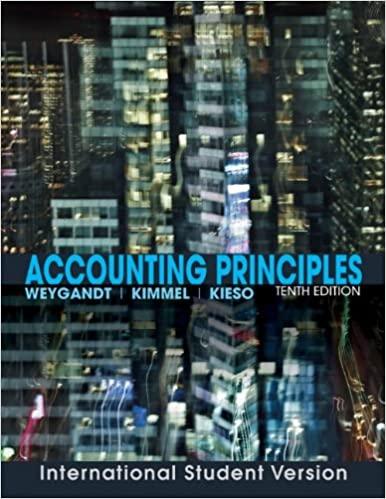Question
Homeowners Homework Questions Use the Homeowners 3 (Special Form) policy in Appendix B of your textbook to evaluate the following situations. Note that the declarations
Homeowners Homework Questions
Use the Homeowners 3 (Special Form) policy in Appendix B of your textbook to evaluate the following situations. Note that the declarations page shows the coverage limits. If you have the electronic textbook the declarations page may be missing. If there is no declarations page, use the following coverage limits:
Section I Coverages Limit A-Dwelling $250,000 B-Other Structures $25,000 C-Personal Property $125,000 D-Loss of Use $75,000
Section II Coverages E-Personal Liability $300,000 each occurrence F-Medical Payments to Others $1,000 each person
In each part, identify what losses will be covered and what losses will not be covered. Specify what part of the policy covers each loss and specify the dollar amount that will be paid by the insurance company if it is possible to determine such amount with the information given. Specifically explain why a loss is or is not covered. For example, suppose $500 is stolen from an insureds wallet. Theft is covered under Part C Personal Property. This is found under Perils Insured Against, part B, number 9. However, under Coverage C item 3(a), there is a $200 limit on cash. So, $200 is covered by the insurance and $300 is excluded.
Submit your answers in D2L.
Lightning strikes the insured house. The house has a replacement cost of $310,000. Damage to the roof of the house will cost $32,000 to fix, and the actual cash value of the roof is $12,000. A computer with a replacement cost of $3,500 and an actual cash value of $1,400 was destroyed. A tornado badly damages the insured house. The house has a replacement cost of $360,000. The cedar siding must be replaced at a cost of $50,000. The actual cash value of the cedar siding is $28,000. A tool shed on the property was also destroyed. The shed will cost $8,000 to replace and has an actual cash value of $4,000. The insureds 19-year-old son lives in the insured house except when he is at college. There, he lives in an apartment. The son comes home for spring break on March 10th and returns to his apartment on March 17th. While he is home, his apartment is broken into and expensive exercise equipment is stolen. The equipment will cost $2,700 to replace and has an actual cash value of $1,500. The son left his apartment unlocked when he went home. The thief also painted graffiti on the apartment walls. The sons landlord sues the son for $1,200, the cost to repaint the apartment. On Halloween night a trick-or-treater falls off the porch of the insured house. The injuries are not severe but the child does go to the emergency room. The parents of the child ask the homeowners to pay for medical expenses $780. A hailstorm destroys a detached garage. The garage will cost $35,000 to replace and has an actual cash value of $20,000. The insured house has a replacement cost of $350,000. The homeowners garden tools stored in the garage are also damaged by the hail. The tools can be replaced for $2,300 and have an actual cash value of $1,700. The insureds 19-year-old daughter lives at home. She is a heroin addict. One Saturday night she invites her heroin dealer to the house so she can purchase heroin. The heroin dealer steals four firearms from the homeowners collection. Each firearm is worth $1,500. While smoking heroin, the daughter accidently starts a fire that damages the house and its contents. It will cost $36,000 to repair the house, even though the actual cash value of the damaged structure is $19,000. The house has a replacement value of $310,000. Furniture with a replacement cost of $9,000 and an actual cash value of $5,800 is destroyed. A valuable painting with an appraised value of $9,000 is destroyed. The painting is insured on a personal articles policy for $10,000. The daughter stole her fathers credit card and purchased $400 of food and drinks for her and her dealer. The family cannot stay in the house while it is being repaired. They move into an apartment for one month. The rent is $1,100 for the month. Because they are eating out more than usual, the family spends $1,600 for food during the month, when their normal monthly food bill is $1,000. The mortgage payment for the house is $1,500 and must still be paid while the house is being repaired.
Step by Step Solution
There are 3 Steps involved in it
Step: 1

Get Instant Access to Expert-Tailored Solutions
See step-by-step solutions with expert insights and AI powered tools for academic success
Step: 2

Step: 3

Ace Your Homework with AI
Get the answers you need in no time with our AI-driven, step-by-step assistance
Get Started


